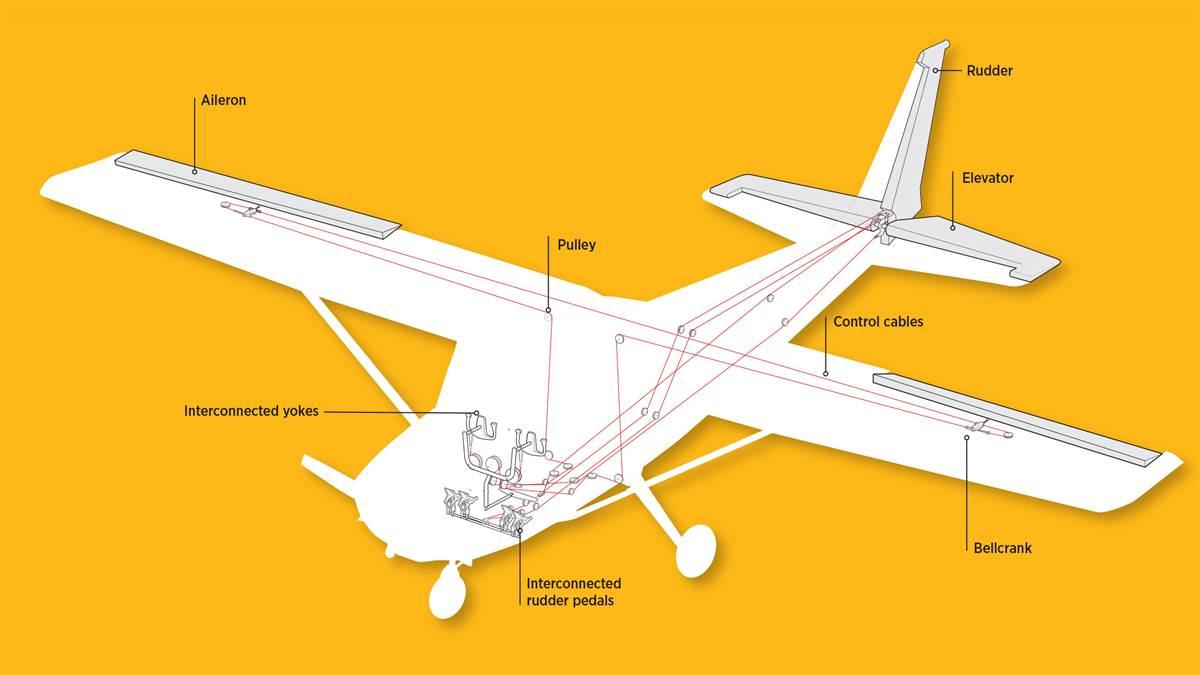How it works: Flight controls
The human-machine interface

For many years the debate over how an airplane is best controlled played out between rival designers. Thankfully by World War I hinged control surfaces had won. Can you imagine wing warping a Boeing 747?
With few exceptions, modern airplanes feature a control stick or yoke and two pedals that control the ailerons, elevator, and rudder. What happens between the hand and foot controls and the outside control surfaces varies, depending on the manufacturer. In most training aircraft a chain and sprocket system connects the two yokes, enabling them to move simultaneously. From there, a series of pulleys and cables run to the ailerons, elevator, and rudder, sort of like a cross between a Rube Goldberg machine and a marionette doll. A Cessna 172 has about five pulleys or guides between the yoke and each aileron.
In some advanced airplanes, control is achieved through a series of metal rods that are directly connected to one another through bearings. Pushrods snake their way from the yoke or stick to the wings and tail through individual rods of different lengths. Unlike cables, which stretch and wear over time, pushrods provide a more direct, crisp feel in the controls.
New airplanes are increasingly doing away with mechanical control and trusting the computer to fly the airplane. Fly-by-wire, long proven in the military and commercial aircraft arenas, is finally making its way to general aviation. In these systems, the stick or yoke is attached to sensors that send the input signal to a computer, which is constantly tracking everything from air temperature to angle of attack. In normal modes the computer sends the pilot input signal through wires to a servo near the control surface, prompting it to move. When things start to become unsafe, such as high angles of attack, the computer becomes a little more assertive and combines the pilot input with computer control to help make the correct inputs.



